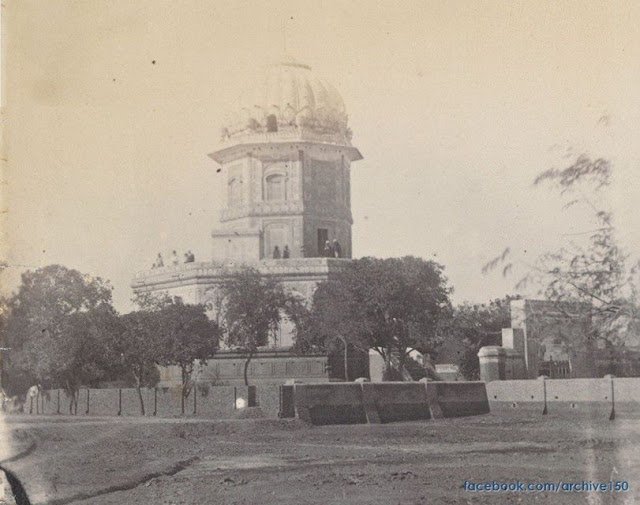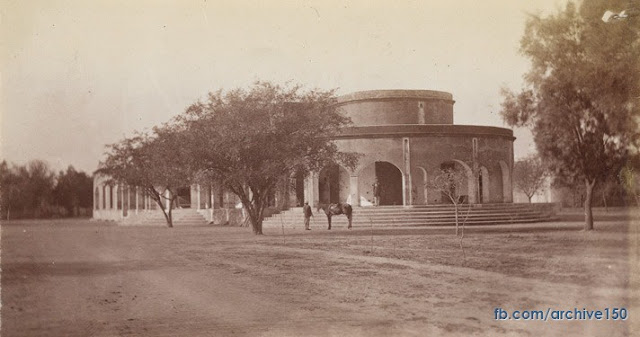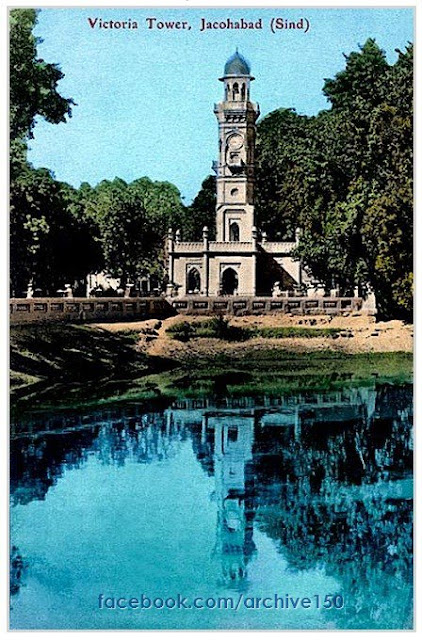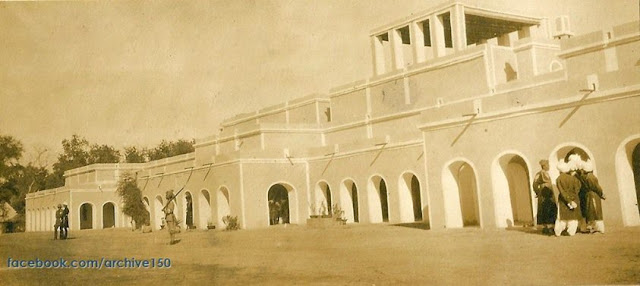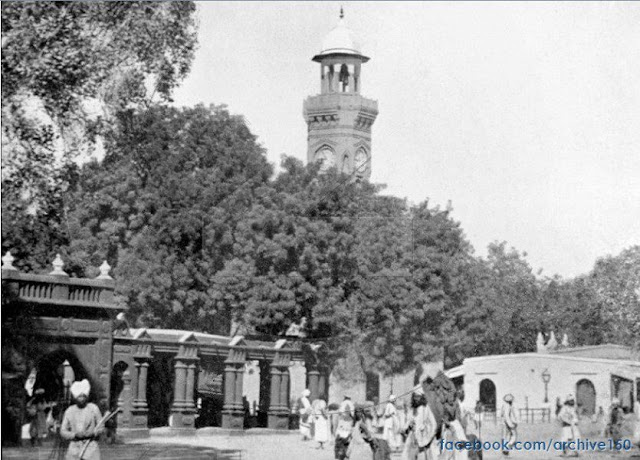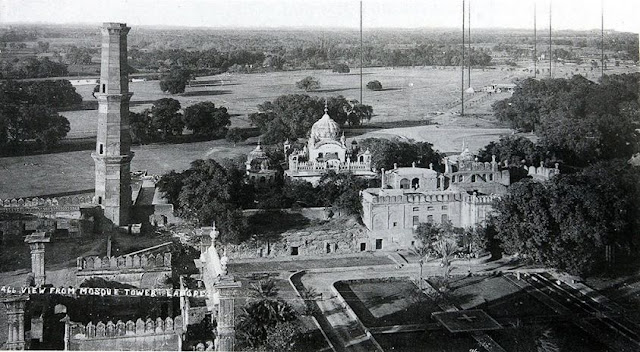ghazi52
PDF THINK TANK: ANALYST

- Joined
- Mar 21, 2007
- Messages
- 101,794
- Reaction score
- 106
- Country
- Location
City of Saints: Multan, Some Rare Images
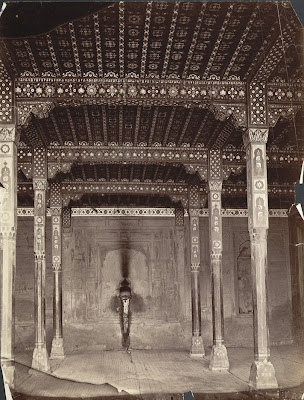
Photograph of the interior of a mosque in Multan, now in Pakistan, taken by an unknown photographer in the 1880s, part of the Bellew Collection of Architectural Views. The city of Multan has a recorded history that stretches back over two millennia. It was an ancient stronghold of the Buddhist Gandharas, then from the 6th century AD a centre of Hinduism, especially the worship of Surya or the sun god. Following the advent of Islam in South Asia, when the city came under Arab rule in the 7th century, it became a centre for Muslim saints and scholars, where many of their shrines and tombs remain. These include the mausolea of the famed Islamic scholar Shaikh Bahauddin Zakariya and his grandson Shah Rukh-i-Alam

Photograph of the ghats or stepped embankments lining the Ravi river in Multan, now in Pakistan, taken by an unknown photographer in the 1880s, part of the Bellew Collection of Architectural Views

This print of the Van Agnew monument in Multan was taken in the 1860s by an unknown photographer. Multan, situated on the frontier of the subcontinent, has had a turbulent political history as the first point of contact for Mughal invaders. It came under the control of British forces by 1849 after a long battle with the Sikh rulers of the Punjab and rebellion in Multan province and the city itself. The memorial obelisk is dedicated to two British officers, Vans Agnew and Anderson, who were murdered after being sent by the resident to take charge of the fort during the troubles

Photograph of Shams-i-Tabrizi Tomb at Multan in the Punjab, Pakistan, from Macnabb Collection, taken by William Henry Baker in the 1860s. This tomb was rebuilt in 1780 and belongs to a celebrated Sufi martyr who was murdered in 1247. The main body of the building is a square surrounded by a verandah. The upper section is octagonal, surmounted by a hemispherical dome covered in glazed blue tiles. Some parts of the wall are decorated with glazed tiles, mainly blue and white, arranged in geometric patterns

Photograph of the Fort at Multan in the Punjab, Pakistan, from the Macnabb Collection, taken by William Henry Baker, in the 1860s. The fort in Multan once had forty-six towers or bastions, including the two flanking towers at each of the four gates. Aurangzeb built a mosque on the site of the temple of Narsingh but the mosque was destroyed in the siege of 1848. The Mausoleum of Rukn-ul-din, or Rukh-i-Alam ('Pillar of the World'), may be seen on the left of the photograph. This tomb is one of the finest achievements of the Multan builders. It is believed to have been executed by order of Ghiyas al-Din Tughluq (r.1325-51), Sultan of Delhi, between the years 1320 and 1324. This domed structure decorated with glazed tiles and has an octagonal plan with battered walls and sloped turrets.

Photograph of the mausoleum of Rukn-ud-din, known as the Rukn-ul-Alam in Multan, the Punjab, Pakistan, taken by William Henry Baker in the 1860s. The Mausoleum of Rukn-ud-din, or Rukh-i-Alam ('Pillar of the World'), may be seen on the left of the photograph. This tomb is one of the finest achievements of the Multan builders. It is believed to have been executed by order of Ghiyas al-Din Tughluq (r.1325-51), Sultan of Delhi, between the years 1320 and 1324. This domed structure has an octagonal plan with battered walls and sloped turrets. The exterior is decorated with glazed tiles and and string courses; the dark blue, azure and white tiles stand out against the red bricks.

Photograph of an Idgah at Multan, Punjab in Pakistan, from the Macnabb Collection, taken by William Henry Baker in 1865. An Idgah is a qibla wall for prayers during the Muslim Eid festival, which marks the end of Ramadan. Multan has numerous mosques and tombs. However, it is particularly noted for its large Fort and three major mausoleums; those of Shams-i-Tabriz, Rukn-i-Alam and Shah Bahawal Haq

Photograph of a temple in the Lachman Tal at Gohad in Madhya Pradesh, taken by George Edward Herne in 1869. The Imperial Gazetteer of India states, "The town [of Gohad] stands on the right of bank of the Vaisali river, a tributary of the Sind, and is surrounded by three walls, within the innermost of which stands a massive fort. The latter was built by the Jat chief Rana Bhim Singh in 1739, and contains a large palace built by Rana Chhatrapati Singh, now used as an office, and several other buildings, all profusely covered with carving...To the south of the palace is a large tank, the Lachman Tal, with a small temple in the centre."
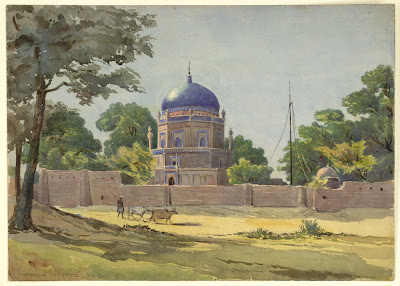
Watercolour by Alfred Frederick Pollock Harcourt (1836-1910) of the tomb of Shams-i Tabriz at Multan in the Punjab, Pakistan, dated 30th December 1876. The image is inscribed on the front in pencil: 'Shamas Tabraiz. 30 Dec 76'; and on the back in ink: 'The Shamas Tabraiz Masjid Multan, Alfred Harcourt.' This tomb was rebuilt in 1780 and belongs to a celebrated Sufi martyr who was murdered in 1247. The main body of the building is a square surrounded by a verandah. The upper section is octagonal, surmounted by a hemispherical dome and covered in glazed blue tiles. Some parts of the walls are decorated with glazed tiles, mainly blue and white, arranged in geometric patterns.

Photograph of the interior of a mosque in Multan, now in Pakistan, taken by an unknown photographer in the 1880s, part of the Bellew Collection of Architectural Views. The city of Multan has a recorded history that stretches back over two millennia. It was an ancient stronghold of the Buddhist Gandharas, then from the 6th century AD a centre of Hinduism, especially the worship of Surya or the sun god. Following the advent of Islam in South Asia, when the city came under Arab rule in the 7th century, it became a centre for Muslim saints and scholars, where many of their shrines and tombs remain. These include the mausolea of the famed Islamic scholar Shaikh Bahauddin Zakariya and his grandson Shah Rukh-i-Alam

Photograph of the ghats or stepped embankments lining the Ravi river in Multan, now in Pakistan, taken by an unknown photographer in the 1880s, part of the Bellew Collection of Architectural Views

This print of the Van Agnew monument in Multan was taken in the 1860s by an unknown photographer. Multan, situated on the frontier of the subcontinent, has had a turbulent political history as the first point of contact for Mughal invaders. It came under the control of British forces by 1849 after a long battle with the Sikh rulers of the Punjab and rebellion in Multan province and the city itself. The memorial obelisk is dedicated to two British officers, Vans Agnew and Anderson, who were murdered after being sent by the resident to take charge of the fort during the troubles

Photograph of Shams-i-Tabrizi Tomb at Multan in the Punjab, Pakistan, from Macnabb Collection, taken by William Henry Baker in the 1860s. This tomb was rebuilt in 1780 and belongs to a celebrated Sufi martyr who was murdered in 1247. The main body of the building is a square surrounded by a verandah. The upper section is octagonal, surmounted by a hemispherical dome covered in glazed blue tiles. Some parts of the wall are decorated with glazed tiles, mainly blue and white, arranged in geometric patterns

Photograph of the Fort at Multan in the Punjab, Pakistan, from the Macnabb Collection, taken by William Henry Baker, in the 1860s. The fort in Multan once had forty-six towers or bastions, including the two flanking towers at each of the four gates. Aurangzeb built a mosque on the site of the temple of Narsingh but the mosque was destroyed in the siege of 1848. The Mausoleum of Rukn-ul-din, or Rukh-i-Alam ('Pillar of the World'), may be seen on the left of the photograph. This tomb is one of the finest achievements of the Multan builders. It is believed to have been executed by order of Ghiyas al-Din Tughluq (r.1325-51), Sultan of Delhi, between the years 1320 and 1324. This domed structure decorated with glazed tiles and has an octagonal plan with battered walls and sloped turrets.

Photograph of the mausoleum of Rukn-ud-din, known as the Rukn-ul-Alam in Multan, the Punjab, Pakistan, taken by William Henry Baker in the 1860s. The Mausoleum of Rukn-ud-din, or Rukh-i-Alam ('Pillar of the World'), may be seen on the left of the photograph. This tomb is one of the finest achievements of the Multan builders. It is believed to have been executed by order of Ghiyas al-Din Tughluq (r.1325-51), Sultan of Delhi, between the years 1320 and 1324. This domed structure has an octagonal plan with battered walls and sloped turrets. The exterior is decorated with glazed tiles and and string courses; the dark blue, azure and white tiles stand out against the red bricks.

Photograph of an Idgah at Multan, Punjab in Pakistan, from the Macnabb Collection, taken by William Henry Baker in 1865. An Idgah is a qibla wall for prayers during the Muslim Eid festival, which marks the end of Ramadan. Multan has numerous mosques and tombs. However, it is particularly noted for its large Fort and three major mausoleums; those of Shams-i-Tabriz, Rukn-i-Alam and Shah Bahawal Haq

Photograph of a temple in the Lachman Tal at Gohad in Madhya Pradesh, taken by George Edward Herne in 1869. The Imperial Gazetteer of India states, "The town [of Gohad] stands on the right of bank of the Vaisali river, a tributary of the Sind, and is surrounded by three walls, within the innermost of which stands a massive fort. The latter was built by the Jat chief Rana Bhim Singh in 1739, and contains a large palace built by Rana Chhatrapati Singh, now used as an office, and several other buildings, all profusely covered with carving...To the south of the palace is a large tank, the Lachman Tal, with a small temple in the centre."

Watercolour by Alfred Frederick Pollock Harcourt (1836-1910) of the tomb of Shams-i Tabriz at Multan in the Punjab, Pakistan, dated 30th December 1876. The image is inscribed on the front in pencil: 'Shamas Tabraiz. 30 Dec 76'; and on the back in ink: 'The Shamas Tabraiz Masjid Multan, Alfred Harcourt.' This tomb was rebuilt in 1780 and belongs to a celebrated Sufi martyr who was murdered in 1247. The main body of the building is a square surrounded by a verandah. The upper section is octagonal, surmounted by a hemispherical dome and covered in glazed blue tiles. Some parts of the walls are decorated with glazed tiles, mainly blue and white, arranged in geometric patterns.






















